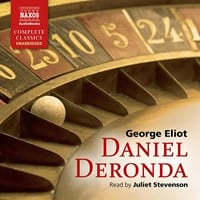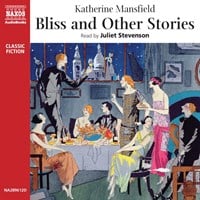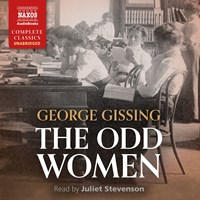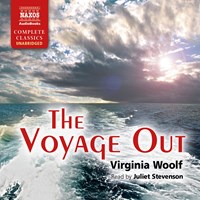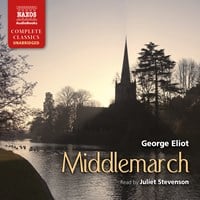Recent audiobooks
Juliet's Accolades
House of Names Audie Award 2018 Literary Fiction & Classics
Belgravia AudioFile Best of 2016 Fiction
The Paying Guests AudioFile Best of 2014 Fiction
Jacob's Room AudioFile Best of 2014 Classics
Trespass AudioFile Best of 2011 Fiction
The Golden Notebook AudioFile Best of 2010 Classics
The Road Home AudioFile Best of 2009 Fiction
At the Back of the North Wind Audie Award 2006
Podcasts
Talking with Juliet Stevenson
In June 2022, Juliet Stevenson was inducted as a Golden Voice, AudioFile's lifetime achievement honor for audiobook narrators.
How did you get started with narrating?
My first-ever audiobook was KATE HANNIGAN, a novel by Catherine Cookson. And my first-ever television job was to play the young lead in a serialization of The Mallen Girl, which was also written by Cookson. So as an offshoot of that, I was asked to narrate the audiobook of KATE HANNIGAN—that was 38 years ago, in 1984. I had never done it before, but I’d always loved reading aloud and had been read aloud to as a child by my parents, so it came relatively easily. It was the first but also possibly the most challenging audiobook I’ve ever done since, because it required a multitude of voices for working women on the streets of Newcastle, and the Geordie accent, which is the accent of the Newcastle-on-Tyne area, is among the most difficult accents to do in the UK. So recording the book was a dive into the deep end! I had to find voices for dozens of different kinds of young mums standing on the street chatting away in Geordie. But I enjoyed the challenge, and a love affair with audiobooks was started.
What has surprised you the most about your work in audiobooks?
One of the surprises has been how much reading audiobooks has to teach you about acting. It’s the most liberating form of all, because you have to play all the parts. If you’re reading a novel in which you play old men, young women, dogs, grandmothers, witches, goblins, every kind of creature, human or otherwise, who’s ever spoken, you extend your range hugely. And I’m very preoccupied with wanting the reader to know exactly who is speaking at any one time—you don’t want the reader to be distracted by not being clear about whose voice it is, so that requires a full commitment to the vocal tones, intonations, rhythms, and pitch of every single character. The range and diversity of what you get to play when you’re reading an audiobook which is richly peopled is greater than anything you’ll ever get in theater, television, or film. Sometimes I’m slowly and painstakingly constructing a character for a television piece or a theater play, and then I think to myself, well, if this were a character in an audiobook, I’d just jump in. I’d find the voice and the accent purely instinctively. Audiobook work has really been liberating, releasing and confidence-building—and it has extended my range in other forms of work.
What is the most interesting piece of research you’ve done for an audiobook?
I do love to do accents, the huge range and variety of accents that come along with audiobooks, and I really like to get them as accurate as possible. And this quite often takes me to YouTube, because very often the best way to learn an accent is to find a native speaker of that accent in a YouTube documentary or piece to camera. So, for example, I recently found myself watching crazy cooking programs from various suburban restaurants in Kentucky, because I had to do a Kentucky accent, and I wanted to listen to the women who were native to that area. Accent hunting takes you to the wildest and wackiest reaches of YouTube! And that is one of the great joys of recording audiobooks.
June/July 2022
__
British actress Juliet Stevenson's love of reading aloud is obvious to anyone lucky enough to hear her, and be instantly transported to another time and place.
And it's not something she takes lightly. She prepares meticulously: first to understand the writing style of the author and match her delivery and tone. "If you're reading JANE EYRE , there's a certain kind of narrative style, which you need to drive that enormous, elaborate, labyrinthine prose," says Juliet. "But if you're doing a minimally written modern novel, then you find a different style."
Then she prepares characters, which is tricky when you have to jump from one to another in the same scene, so she casts them in her head. "I find somebody I know in real life, or someone fictional, and base them on that person. So in my head I've got a quick image to jump to when it comes to their dialogue." After making character sketch notes and marking up the dialogue, she has her fingers crossed that recording will go smoothly, without too many producer or engineer interventions, as "a fluid read is always a good thing!"
Not that she needs much direction, unless there are difficult characters or accents to master--like reading a Catherine Cookson novel with 47 characters, all with Geordie accents (from northeast England). "I struggled to do one accurately," laughs Juliet, "let alone 47."
Her latest audiobook readings have been a joy--especially E.M. Forster's classic ROOM WITH A VIEW . "It's a work of such dazzling, quiet brilliance," enthuses Juliet, who reckons you understand even more when you read aloud. "Sometimes," she says, "resonance will be given to a sentence simply by the rhythm it contains when you read it out loud, beyond its literal sense and the meaning of the words--and Forster's rhythms are amazing; his economy, subtlety, and precision are phenomenal. And he constantly surprises you, in plot and character."
As for BEST OF WOMEN'S SHORT STORIES, VOLUME 3, Juliet loved reading her four tales, from Wilkie Collins to Louisa May Alcott. "I wouldn't otherwise have read them--they're not on everybody's bookshelves." Similarly, she didn't know LADY AUDLEY'S SECRET, by Mary Elizabeth Braddon, and found it not only well written but good fun to read. And, as with the best audiobooks, she says, "It really keeps you guessing."--Helen M. Jerome
Photo courtesy of narrator
The latest audiobook reviews, right in your inbox.
Get our FREE Newsletter and discover a world of audiobooks.














